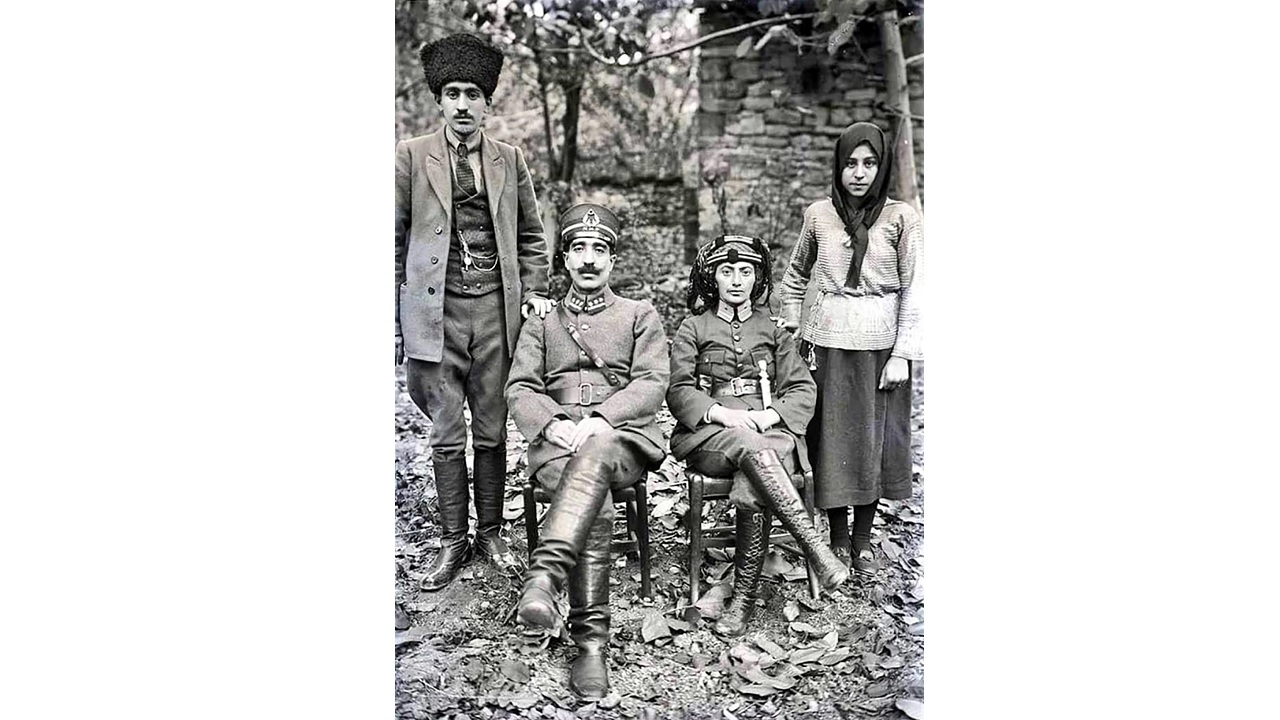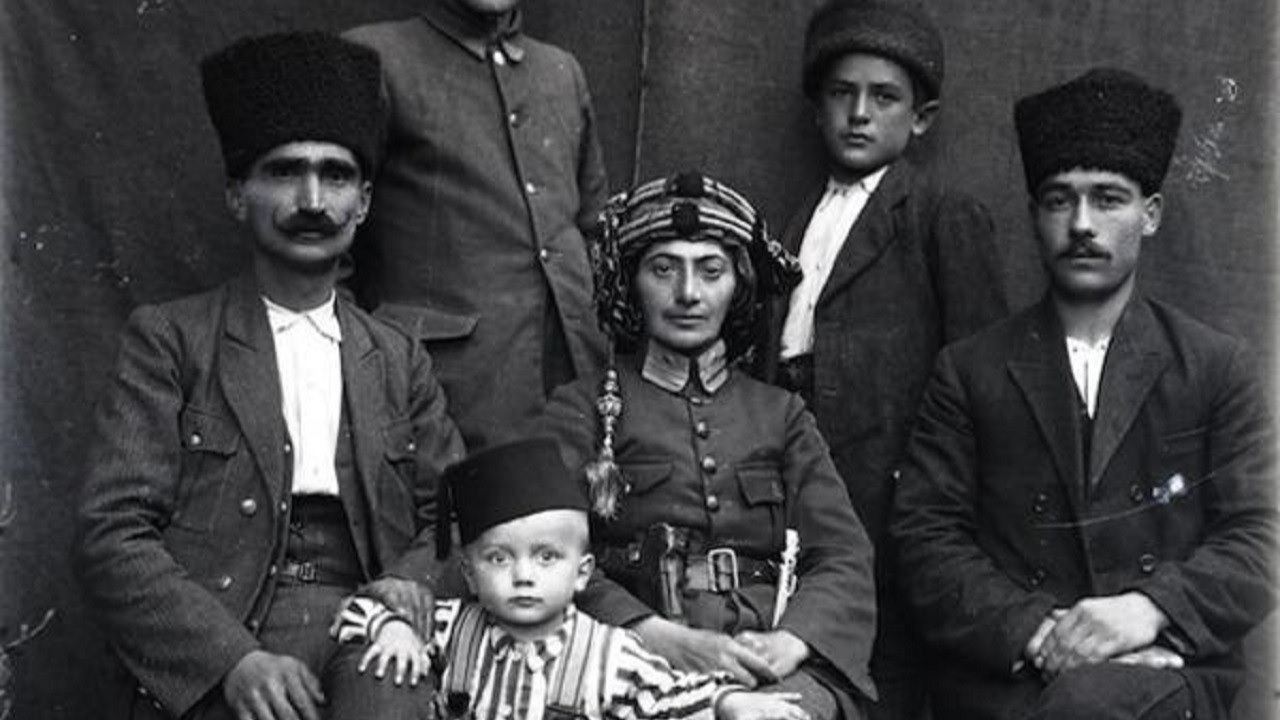The years of the Turks’ national struggle are full of countless heroic stories, most of which we do not know. One of these heroes is Kara Fatma. Kara Fatma, who asked permission from Mustafa Kemal Pasha to fight for the homeland after her husband was martyred, added a new one to the heroic epics of Turkish women.
Mustafa Kemal Pasha: ‘There is no army.’ When they say ‘It is installed!’ He replied. We are sure If only he had met Kara Fatma earlier ‘It’s already been established.’ he would say. Because even if there was no regular army, the Turkish nation had actually started to resist the occupation since the first day, including women, children and children. One of these heroic stories, many of which we do not know, was written by a young Turkish woman named Kara Fatma.
The story of Kara Fatma is one of the most important heroic stories of which we saw many examples during the years of the national struggle. She personally went and met with Mustafa Kemal Pasha after her husband was martyred. and Kara Fatma, who asked him for permission to fight, joined the army as a corporal and led a unit of hundreds of people. Kara Fatma, who took part in many important battles, especially the liberation of Izmit, was a warrior who disregarded her own life.
A born warrior Turkish woman: Who is Kara Fatma?
Although it is not certain, she was born in Erzurum in 1888 as the daughter of Yusuf Ağa. Kara Fatma’s name is actually Mahi according to population records. However, she always used the name Fatma Seher. Fatma went to Edirne after marrying her husband, known as Dervish.
When the First World War started, Fatma went to the Caucasian Front with her husband. She fought against the enemy with the ten women warriors she organized here. After his wife was martyred in Sarıkamış, he went to Istanbul and from there to Erzurum, his wife’s hometown, with his children. But the occupation continued unabated, he had no intention of sitting at home.
He disguised himself and traveled secretly for days and met with Mustafa Kemal:
Fatma, who heard that Mustafa Kemal Pasha was in Sivas for the Sivas Congress at that time, set out immediately. He traveled secretly for three days, often disguised because at that time, there were occupation soldiers in every piece of land he passed through. He finally arrived in Sivas and caught Mustafa Kemal Pasha just as he was about to have lunch.
Yes, he literally ‘caught’ him because it was not that easy to meet with Mustafa Kemal as everyone was suspected of being a spy. Finally, he convinced the pasha and they sat together and talked. Mustafa Kemal asked him if he knew how to ride a horse and use a gun. Fatma knew them all, and more importantly, she was bold and only asked permission from the pasha to fight.
According to what Fatma later told, Mustafa Kemal Pasha was amazed by her courage. He called her Kara Fatma, showing her bravery. and assigned him to Istanbul with a signed document. Having received both permission and orders, Kara Fatma immediately set out for Istanbul and began to organize the resistance movement.
Kara Fatma traveled from village to village and organized the resistance:

Kara Fatma, who came to Istanbul, formed a gang of 15 people together with the local resistance fighters there. From here we went to Izmit under Greek occupation. He traveled to almost all the villages and expanded his gang by introducing himself. The number of warriors approached 500.
Kara Fatma was caught by Greek soldiers while secretly carrying a gun and He was tortured for 19 days. When he came out, there were 43 female and 700 male warriors in his platoon. Even though he was a corporal, he was the leader of nearly a thousand warriors.
After local resistance, Kara Fatma and her warriors participated in the First İnönü, Second İnönü and Commander-in-Chief Square Battles. They were martyred and injured in every war they participated in. But they were also causing great losses to the enemy. After clearing Afyon from the enemy, Kara Fatma went to Bursa and saved this place from Greek occupation.
Kara Fatma retired with the rank of first lieutenant:

After participating in numerous wars and receiving dozens of wounds, Kara Fatma was promoted to the rank of first lieutenant and retired with this rank. He donated his entire salary to the Red Crescent. He lived a quiet life for many years. But later it turned out that he was actually experiencing great misery because he had no one left.
In 1950, it was published in the Women’s Newspaper with the title ‘Kara Fatma is Waiting for Help’. The difficulties he experienced were explained. Years later, only in 1954, he was granted a pension by the council’s decision. Kara Fatma, who was admitted to the Darülaceze on June 21, 1955, died due to heart failure on July 2, 1955, at the age of 67. His body was buried in Kulaksız Cemetery.
Kara Fatma’s heroism cannot be forgotten:

Assoc. Prof. Kocaeli University, Faculty of Arts and Sciences, History of the Republic of Turkey. Dr. According to Esma Torun, even though she is known as Fatma Seher Erden In fact, Kara Fatma’s real surname was Savaşir. Because he had been fighting all his life.
Kara Fatma and her gang are in Bolu, Kocaeli, Bursa, Izmit caused great casualties to the occupation soldiers, He made important contributions in Sakarya and the Great Offensive. Kara Fatma, who was generous enough to donate her salary to the Red Crescent, did not demand a single penny from the state, which had a great contribution to its establishment, until she fell into great poverty.
The whole world admired him:

Do not think that Kara Fatma is a local hero. When he received the rank of lieutenant in the New York Times of the period It was reported in the headline with the title ‘Turkish Woman Fighting in the Army Promoted to Lieutenant’. The USSR diplomat of the period, Semyon Ivanovich Aralov, mentions Kara Fatma in his memoirs with the following sentences:
“A gang member, Fatma Sergeant, one of the warrior women, came to our embassy a few times. Fatma Sergeant was the leader of a gang. She had fought with Greeks and rebels. Fatma Sergeant was a short, thin, energetic-faced, dark-eyed, elderly woman. Once, she was also a gang member and “She came to the embassy with her son, who participated in the wars with his mother. Fatma was wearing a long black jacket on her back and a striped skirt on her feet. You could see rifle bullets and a dagger on her wide belt around her waist, and a strap on her shoulder.”
One of the most important heroes of the years of national struggle Who is Kara Fatma and what did she do? We answered frequently asked questions such as: As the Turkish nation, we cannot express enough gratitude to all these heroes whose names we know, like Kara Fatma, and many more whom we do not know.
